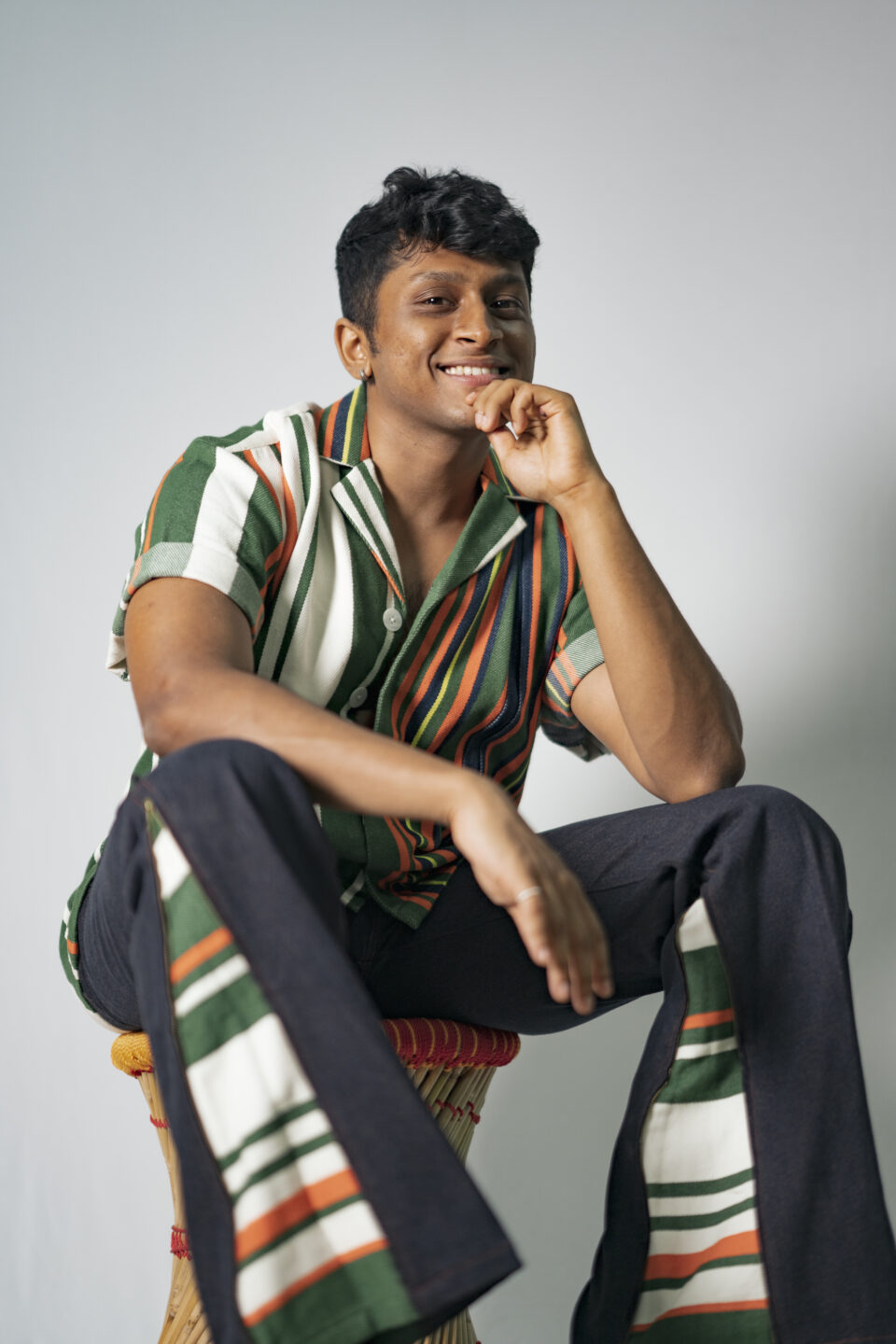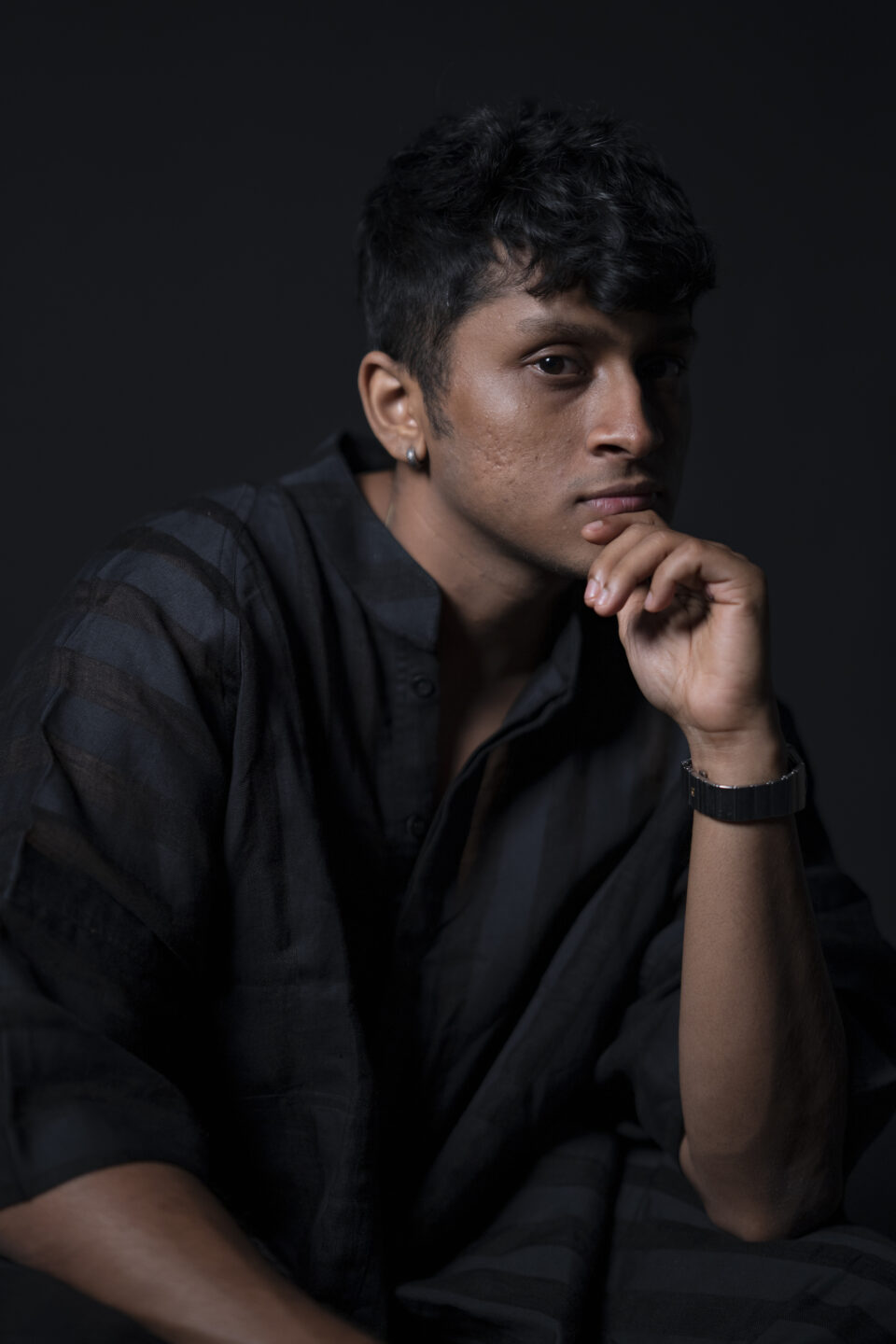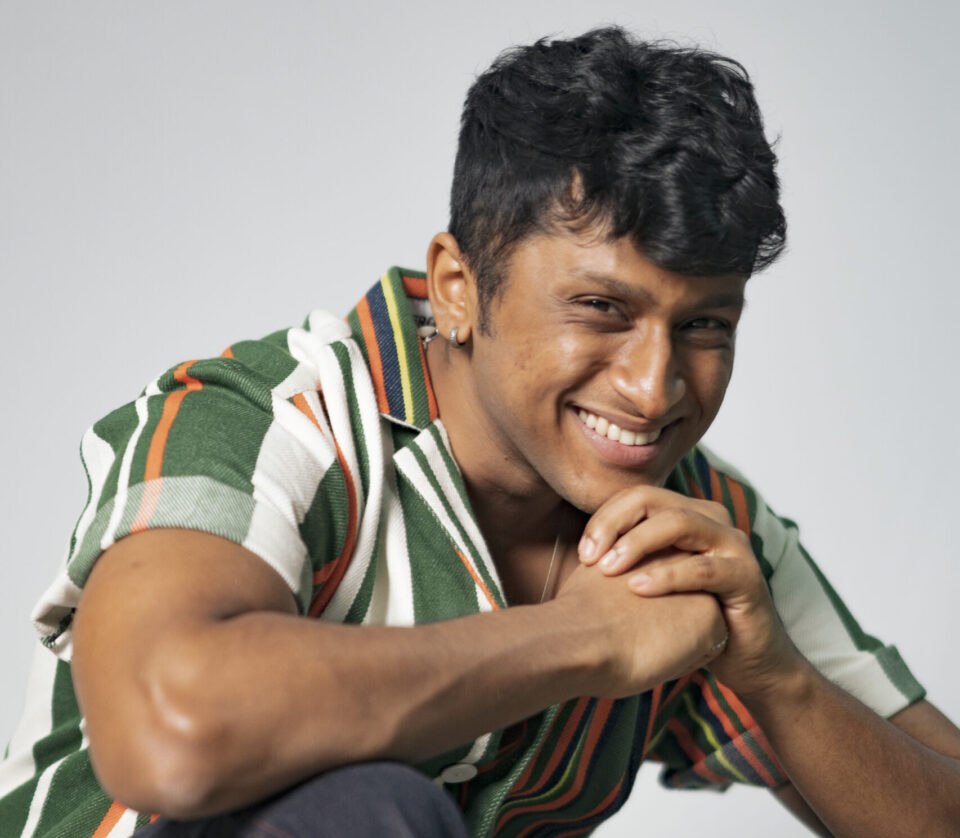
Amrit Ramnath
Setting a standard for risk-taking in Indian classical music
To understand Indian music in all its uniqueness and diversity, one must pay close attention to what is happening in the south of India. Amrit Ramnath, a 25-year-old singer and composer based out of the city of Chennai, has taken the industry by storm.
Beginning his career with Tamil hits such as “Oorkuruvi” and “Nila,” the young maestro has now taken to the big screens with the announcement of him being the music composer for director Vineeth Sreenivasan’s 2024 film Varshangalkku Shesham. Rolling Stone India got the unique opportunity to speak with Amrit Ramnath to explore his journey as a classically trained vocalist and musician while taking the much-needed respite to test his creativity in as many different forms as he could.
Rolling Stone India: Your earlier covers with fellow violinists really stood out, and then there’s your track Manase, which seemed to mark a turning point in your career. Can you share more about the inspiration behind Manase and how it shaped your perspective on love and relationships?
Amrit Ramnath: “Manase” was one of my first independent songs and it delves into the complexities we face in our late teens and twenties, especially regarding love, friendship, and personal security. The song explores the conflicting voices in our minds and the journey of embracing and overcoming them. The music video aimed to visually represent this inner conflict and the ethereal nature of the song.
It’s fascinating how you translated those themes into such a visually striking piece. You come from a family with a rich musical heritage, particularly your mother, Bombay Jayashri. Can you tell us about your upbringing and how being surrounded by such talent influenced you?
My upbringing was immersed in music, thanks to my mother’s diverse musical background. She exposed me to various genres and styles, including classical, Bollywood, Marathi, and more. Growing up in such a musically fertile environment shaped my eclectic taste and provided me with a solid foundation in diverse musical traditions. She has been easily the most influential person in my life in the sense that she’s been my, of course, mentor, teacher, but more than that, she’s been such an incredible friend.
The thing is, you know, I grew up in an environment surrounded by music. And while she practiced classical music primarily, owing to the fact that she was born and raised in Bombay, meant that, you know, she was exposed to all kinds of music. She’s been performing all kinds of music, be it old cinema music from the industry, Hindi music, Marathi music, Bhav Geeta, Ghazals, Hindustani.
It’s like she donned all those hats for me. And I was fortunate to have learned, you know, like very pan-Indian music growing up. So I’ve been trained in like light classical, Ghazals, very, very classical music.
I’ve also learned Western classical music. I’ve been like brought up listening to a lot of like Hindi music from the 60s, 70s, Bengali music, because my father’s from Calcutta. So I think growing up was very like, you know, think of putting a child in a very musically fertile environment.

Beyond being a vocalist, you’re also involved in music production. What draws you to production, and how do you balance the creative process with the technical aspects?
I approach music production from a performative perspective, treating it as an extension of my musical expression. My aim is to create a sonic palette that aligns with my artistic vision. Balancing creativity with technical proficiency involves channeling my emotions into the music while also honing my technical skills to execute my vision effectively.
Your recent collaboration on Vinit Srinivasan’s film scoring project marks your debut as a music director. How was the experience, and how does scoring for film differ from your independent work?
Collaborating with Vinit on Varshangalku Shesham was a rewarding experience. It allowed me to blend my musical vision with his visual storytelling, creating a cohesive audio-visual narrative. While scoring for film requires aligning with the director’s vision, it also provides an opportunity to explore different emotional landscapes and enhance storytelling through music.
The rise of South Indian music, particularly in independent scenes, has been notable. Where do you see the future of this industry, and how can platforms support artists like yourself on a global scale?
The South Indian music scene is thriving, with artists exploring diverse genres and pushing boundaries. Cross-collaborations and support from platforms like Rolling Stone are vital for amplifying the reach of South Indian artists on a global scale. As an artist, I’m excited about collaborating with musicians from different backgrounds and genres to create unique, cross-cultural music experiences.
Collaboration seems to be a recurring theme for you. Are there any specific artists you’re eager to collaborate with in the future, both locally and globally?
Locally, I’m keen on collaborating with artists like Armaan Malik. Globally, I admire musicians like Divine and Jacob Collier, with whom I hope to collaborate someday. Cross-cultural collaborations offer exciting opportunities to blend diverse musical influences and create something truly innovative.

You’ve mentioned the blend of traditional and contemporary influences in your music. How do you navigate preserving cultural heritage while experimenting with new sounds and styles?
I draw inspiration from my cultural heritage while exploring innovative sounds and styles. For me, cultural preservation involves delving deep into traditional roots while embracing contemporary influences. It’s about honoring the past while evolving with the present musical landscape.
The art form I work with allows for a very limitless approach to music. At least that’s what I really believe. Because at the end of the day, my roots are very Indian music, like very Indian sounding music. But it’s not necessarily Indian classical music. Only because while Indian classical music is, say, what my mom performs the most, it’s not the only style that she’s been trained in. So I feel like therefore, I can really borrow from all kinds of art styles.
I think there’s a certain amount of rigidity in the classical music industry, which is changing, I think, with the generation to come. Because I feel like it’s for no fault of anybody, it’s the approach to the music that needs to change, right? Which is that classical music in its purest form is absolutely stunning. Like Carnatic music, for example, is something I borrow from all the time.
And it’s my way of thinking. It’s like my language, like how we’re speaking right now in English. That’s my language. But it doesn’t mean therefore that, you know, it can’t be used to meander through other musical styles. And I think at the end of the day, if you really work towards finding a certain sound that you’re very, like, again, very sincere about, I feel like, you know, you can really, I feel like that rigidity is now slowly changing with guys like, like Jacob Collier just released a song with Anoushka Shankar, Ravi Shankar’s daughter. And it’s absolutely beautiful. she plays a very, very, interesting tana bit of sorts. And he’s singing in a very Western style.
But there’s a real marriage between the two styles.
Lastly, what are your thoughts on the integration of new technologies, such as AI, into music creation? How do you see it shaping the future of music?
AI presents exciting possibilities for music creation, but it also raises concerns about authenticity and artistic expression. While AI can aid in certain aspects of music production, the emotional depth and human touch in music remain irreplaceable. As artists, we must leverage technology thoughtfully while staying true to our artistic vision and integrity.




